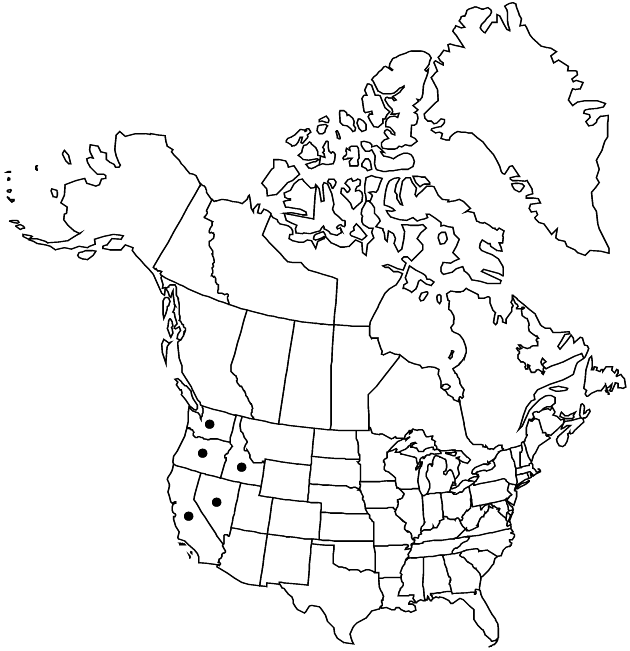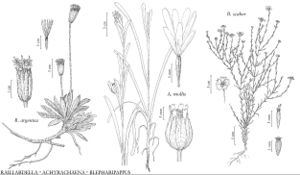Difference between revisions of "Blepharipappus scaber"
Fl. Bor.-Amer. 1: 316. 1833.
Synonyms: Blepharipappus scaber subsp. laevis (A. Gray) D. D. Keck
Treatment appears in FNA Volume 21. Treatment on page 259.
FNA>Volume Importer |
FNA>Volume Importer |
||
| Line 50: | Line 50: | ||
|publication year=1833 | |publication year=1833 | ||
|special status= | |special status= | ||
| − | |source xml=https://jpend@bitbucket.org/aafc-mbb/fna-data-curation.git/src/ | + | |source xml=https://jpend@bitbucket.org/aafc-mbb/fna-data-curation.git/src/f6b125a955440c0872999024f038d74684f65921/coarse_grained_fna_xml/V19-20-21/V21_638.xml |
|tribe=Asteraceae tribe Heliantheae | |tribe=Asteraceae tribe Heliantheae | ||
|subtribe=Asteraceae (tribe Heliantheae) subtribe Madiinae | |subtribe=Asteraceae (tribe Heliantheae) subtribe Madiinae | ||
Revision as of 18:49, 24 September 2019
Leaf blades 6–25+ × 0.5–1.5 mm. Phyllaries 3–8 mm. Ray laminae 2–11 mm. Disc corollas 2–3.5 mm. Cypselae 2–3.5 mm; pappi 0.1–2 mm. 2n = 16.
Phenology: Flowering Apr–Sep.
Habitat: Openings in sagebrush scrub, pinyon-juniper woodlands, yellow-pine forests
Elevation: 300–2200 m
Distribution

Calif., Idaho, Nev., Oreg., Wash.
Discussion
Blepharipappus scaber is unusual among self-incompatible, continental tarweeds for occurring widely in western North America and having a relatively limited distribution in the California Floristic Province.
Selected References
None.
Lower Taxa
None.
